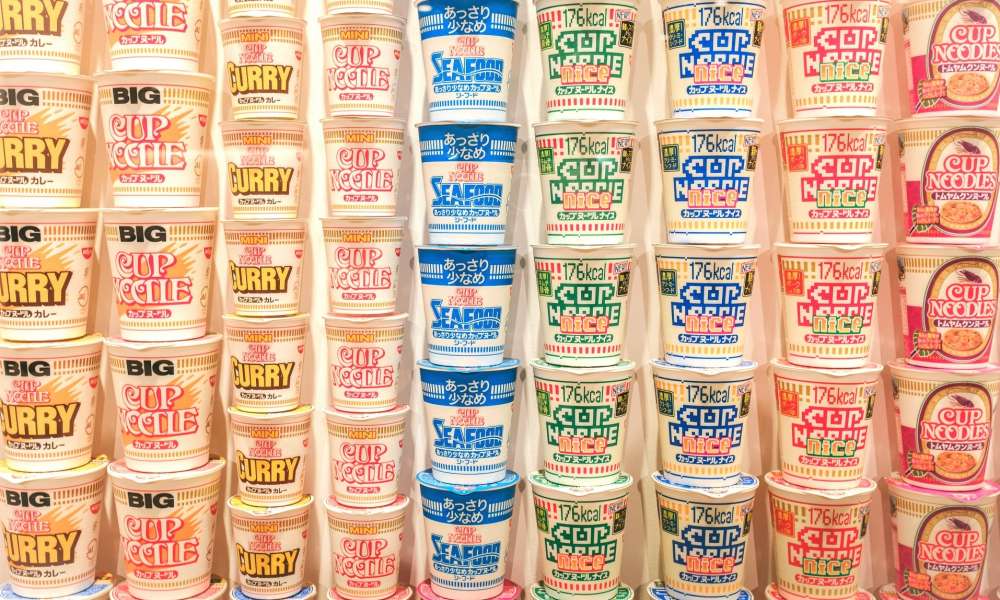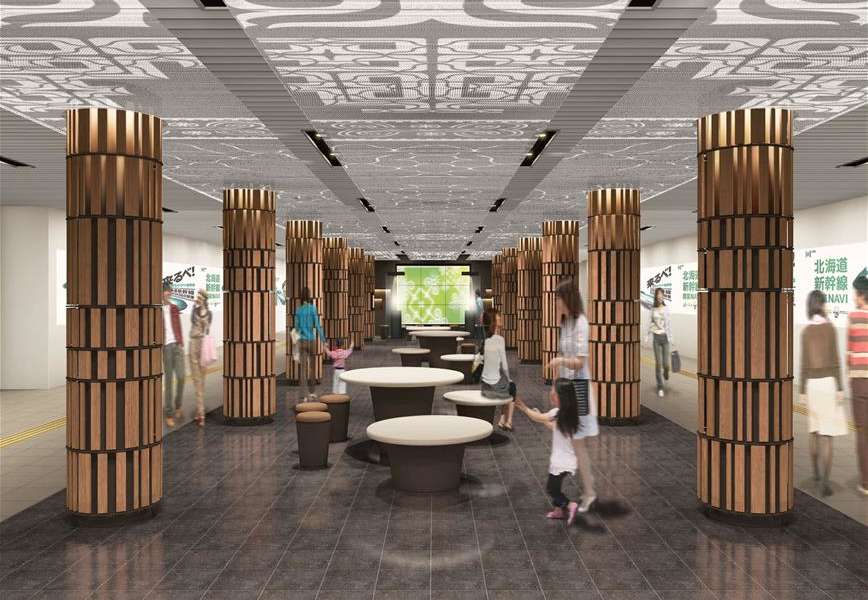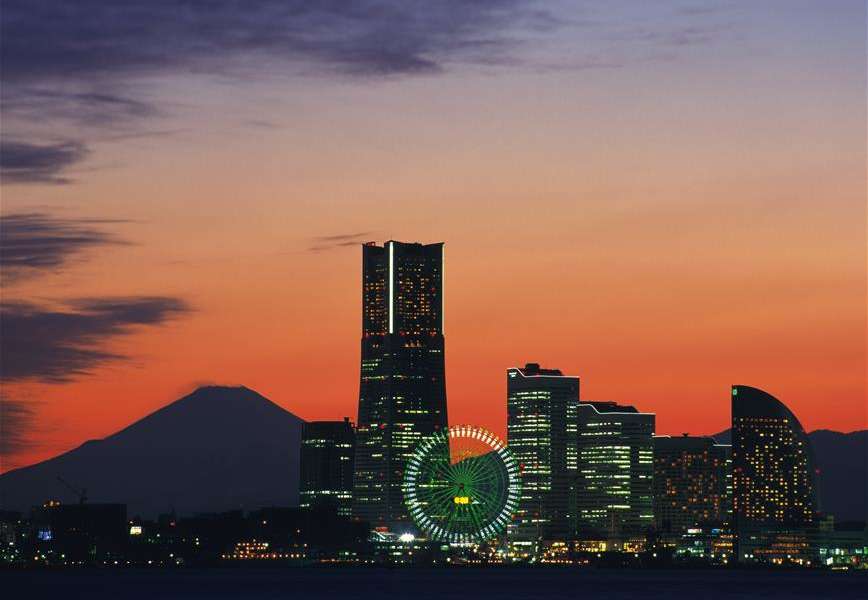
Still pumped from this year's Six Nations? Amazing, keep it up! - we're now officially less than 6 months away from Rugby World Cup 2019 kick-off! Saikо̄! We're struggling to contain our excitement and so is former Welsh rugby player Shane Williams, who's been out in Japan for his 'Big in Japan' series. Last year Shane and fellow former teammate Andy Powell toured the Kansai region, monkeying about as they went along - we're talking questionable karaoke, keepie uppies with shrine priests, geisha training and sumo wrestling (yep, in the traditional loincloth kit!). This time however, Shane is joined by former Lions teammate and English rival Lee Mears as they visit Yokohama and Sapporo for Part 2 of the series, which you can follow here! Sapporo hosts England's group match against Tonga whilst Yokohama hosts not only a number of Home Nations matches but also—drum roll please—the all-important World Cup Final. Read on to find out more about these two cities!
Sapporo, Hokkaido

Welcome to Sapporo, the capital city of Hokkaido, Japan's northernmost prefecture. Sapporo is Japan's fifth largest city by population at a little under 2 million and also one of its most relaxed - if you're coming from Tokyo you'll see just what we mean! From Sapporo it's also super easy to get back to nature, with both mountains and the sea located close-by.
Both outside and within Japan, Sapporo is largely synonymous with winter and especially with the Sapporo Snow Festival held every February in the city's mile-long Odori Park. Not ringing any bells? Well if you've seen pictures or videos from Japan of giant snow and ice sculptures in the form of your favourite anime characters or well-known landmarks then you're probably thinking of the Sapporo Snow Festival. Shane and Lee made a quick stop here before resuming their rivalry with some intense dog sledding! Lee took the W on this occasion and what better way to celebrate than a soak in the therapeutic waters of an onsen (温泉, natural hot spring)? But enough of snow, we're all looking forward to the rest of spring and summer, right? Well we are, and first on our wish list is cherry blossom, or sakura (桜) as its known in Japanese! This pretty pink blossom typically blooms throughout much of Japan around the late-March/early-April mark but in Sapporo's case as late as the start of May on account of its cooler temperatures. So if you've missed the blossom down south or are skeptical of visiting the main and rather crowded sakura hotspots such as Kyoto and Nara, head on up to Sapporo! Odori Park and Maruyama Park are just two of the city's fantastic hanami (花見, cherry blossom viewing) spots, the latter in particular filled with dozens of cherry trees!

From bright pink cherry blossom turn your attention to the local history and culture of Sapporo and the wider Hokkaido region. Numbering officially at 25,000 (but with unofficial estimates as high as 200,000), Hokkaido is in fact home to the indigenous people of Japan, the Ainu. The recently-opened 'Minapa' Ainu Cultural Space in Sapporo Station is a great place to familiarise yourself with a culture remarkably different to that of mainstream Japan. Meaning "crowds of people laugh" in the Ainu language, Minapa features art installations and beautiful artifacts, two interactive touch screen panels for learning about Ainu art and culture and researching other Ainu cultural facilities in Hokkaido, a large scale monitor screen displaying Ainu-designed animation by French artist Boris Labbe and even the weather forecast in the Ainu language! With so many incredible ways for learning about the unique culture of Hokkaido’s indigenous people, this new space is a must-see. And if you're keen to learn more, head to 'Sapporo Pirka Kotan' Ainu Cultural Promotion Center. Meaning “beautiful village in Sapporo” in the Ainu language, Pirka Kotan is a great resource for understanding and appreciating Ainu culture. Visitors can see and even touch a wide variety of hand-made Ainu craftworks made by Ainu artisans, such as traditional clothing and tools. The Sapporo Ainu Association also holds workshops for teaching Ainu embroidery and how to make the 'mukkuri', a traditional musical instrument. Combine a visit to Pirka Kotan with the nearby Jozankei Onsen for the perfect day trip covering all interests just outside of the city centre.
Yokohama, Kanagawa Prefecture

From Sapporo we head south to Yokohama, the capital of Kanagawa Prefecture and Japan's second largest city. Yokohama is conveniently located a mere 30 minutes by train from central Tokyo, making it an incredibly convenient day trip destination from the capital!
Owing to its status as Japan's largest port city, Yokohama has a long history as the gateway through which many foreign cultures entered Japan—be it those from the West or those from the East—and no better place is there to experience this than Chinatown. Yokohama's Chinatown is the largest in Asia (outside of China, duh!) and as you can guess, is packed with stalls selling all sorts of delicious treats and shops selling all sorts of traditional wares. Located nearby is another Yokohama landmark: Minato Mirai 21. A highly developed waterfront area with a number of restaurants, art museums, shops and entertainment venues, Minato Mirai 21 has become an integral feature of the Yokohama skyline. One of Minato Mirai 21's most popular attractions is the Yokohama Cup Noodles Museum. As the name suggests, this museum is dedicated to instant ramen and its inventor, Momofuku Ando. With over 100 varieties on show and the chance to make your very own Cup Noodle, prepare to be amazed by the world of instant ramen you never even knew about.

Speaking of unknown worlds, have you ever thought much about poop? The reason we ask (we do have one) is because a museum has recently opened dedicated entirely to it! Yes, really, the Unko (poop in Japanese) Museum is here till July to convince the world that poop is actually your cute and colourful friend. Bizzare? Incredibly so but it's certainly something you'll remember Yokohama by! The museum is divided into three themed zones, each named after an unko wordplay - 'un'teractive, 'un'stagenic and 'un'telligence. Sure, the ball pit filled with poop-shaped balls is for the kids but the adults needn't miss out on the fun: have your picture taken with pastel-coloured poops in a pink setting or treat yourself to a little anger management by stepping on the turd-shaped light projections in the 'kuso' (shit in Japanese) game to splatter them across the room! And finally, a little retail therapy is also on the books here, with a number of poop-themed souvenirs for you to buy for loved ones - definitely what everyone wants from Japan!
To stay up to date with all the latest happenings in Japan follow us on Facebook or Twitter.


























































